Bukin Syu has only been using his current name for two years, adopting it after he began studying the lost tongue of his Taivoan ancestors. The Taiovan are one of the Pingpu, or plains indigenous groups who are not recognized by the government, and they have been using Chinese names for so long that Bukin isn’t sure how their original naming system worked.
“Bukin means mountain, and my father’s Chinese name includes the character for mountain,” he writes in a display at the O ngangan no niyah (自己的名字, “our own names”) exhibition on indigenous names. His parents’ village, Siaolin (小林), was wiped out by a landslide caused by Typhoon Morakot, and the name further honors his destroyed homeland.
The exhibition, which opened in January at the National Central Library but is currently on view at Ketagalan Culture Center (凱達格蘭文化館) in Taipei’s Beitou District, details the varying naming customs of the 16 official indigenous groups, how they were forced to adopt Japanese and Chinese names and their struggle during the 1980s and 1990s to revert to their “true names.”
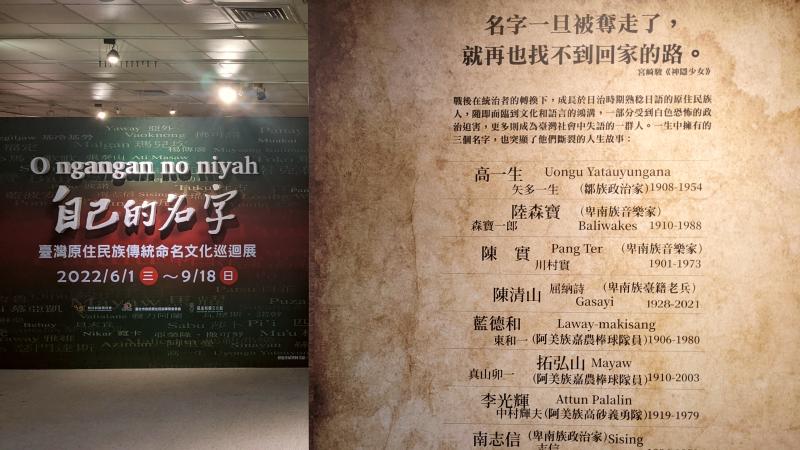
Photo: Han Cheung, Taipei Times
It’s an important exhibition that all everyone should see, as there is still a great deal of misunderstanding and discrimination against those who use their indigenous names. Problems range from having trouble receiving packages at convenience stores and being asked by Han Taiwanese if they could use a name that’s “easier to pronounce,” to outright ridicule.
Due to procedural complications and the aforementioned difficulties, according to the exhibit, as of August 2020 only 5.6 percent of Taiwan’s indigenous people have formally changed their names since doing so became legal in 1995.
As the Ketagalan Culture Center is named after the local Pingpu people, it makes sense that a new section on Pingpu names has been added here.
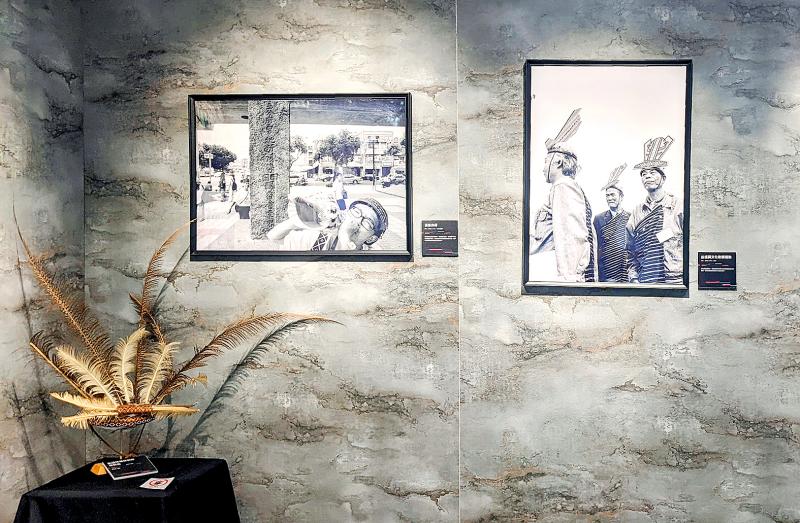
Photo: Han Cheung, Taipei Times
Indeed, there’s enough confusion in mainstream society about how existing indigenous naming systems work, but there’s even less discussion about the experience of modern Pingpu, who have suffered much greater loss of language and culture compared to the 16 groups.
Aidu Timor of the Papora community can trace his family tree back to when they still used indigenous names, but he cannot work out a clear pattern in the naming system. His eighth-generation ancestor used both Chinese and Papora names, but several generations later only Chinese names were recorded.
Mutulavay only adopted her Ketagalan name last year, discovering it in a collection of traditional songs recorded in 1936 by Japanese anthropologists. She even received an Amis name from her friends before she had one from her own people.
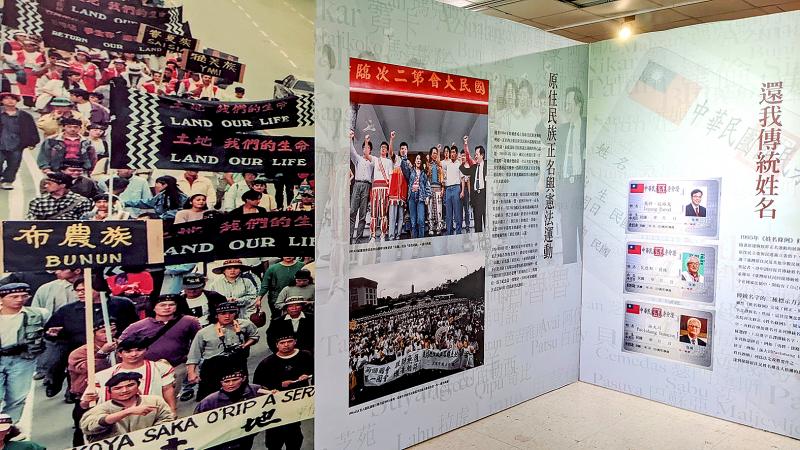
Photo: Han Cheung, Taipei Times
“A name is like a symbol of authenticity… For us who are still searching for the traces of our language, we can only yearn for a name,” she writes.
The exhibition is designed as a winding maze, opening with a quote from Hayao Miyazaki’s animation Spirited Away: “Once your name is taken away, you will never find the way home.” Under it is a list of people who lived during the transition between Japanese and Chinese Nationalist Party (KMT) rule and ended up with three names, such as White Terror victim Uongu Yatauyungana, who had a Japanese name, Kazuo Yata, and a Chinese name, Kao Yi-sheng (高一生).
Visitors traverse the path through history until they reach a still uncertain “exit.” The struggle was not just over personal names, but place names that often glorified the KMT, as well as the government’s pejorative designation “mountain compatriots” (山地同胞).
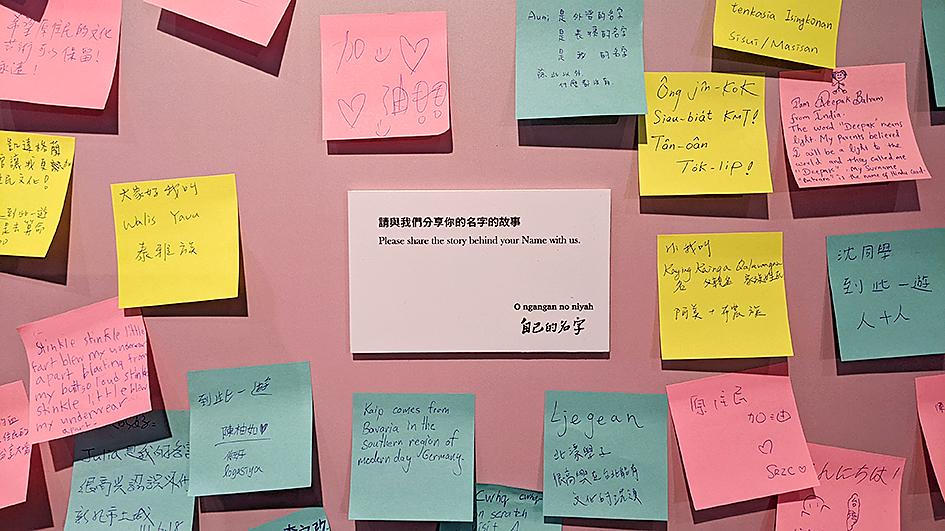
Photo: Han Cheung, Taipei Times
The information is detailed and nuanced and easy to understand, and should clear up much of the confusion or misgivings that people may have toward indigenous names.
The last part demonstrates how different each group’s naming systems are, and one of the displayed picture books, What’s Your Last Name? (請問貴姓), explains to Han Taiwanese that not every indigenous person has a surname, and it is definitely not the first character of their indigenous name.
The rest of the museum is a bit underwhelming, with two other exhibits on the second and third floors. Glory of Feathered Headdress (羽冠的榮耀) is a colorfully designed yet disjointed and lacks the celebratory vibe that one would expect to greet the museum’s 20th anniversary. There’s interesting bits and pieces, but the content not coherent or rich enough for viewers to get a true sense of what the place has accomplished over the past two decades. The screening area, which occupies the bulk of the room, curiously plays on repeat one five-minute video about an exhibition from last year.
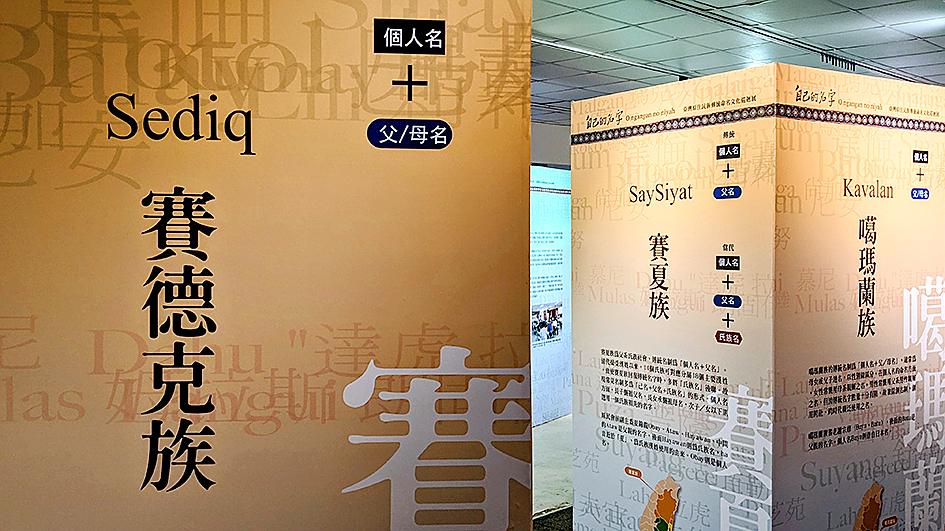
Photo: Han Cheung, Taipei Times
The Necessity for Craftsmanship (工藝的必要) exhibit is well-presented and offers an array of both designer and traditional indigenous crafts from across Taiwan. It’s worth stopping by if you’re a tourist visiting the hot springs, but don’t expect much of a deep dive.
One would expect more information on the Ketagalan and other Pingpu people who once occupied the Taipei area, but each floor only has a small section in a separate corner dedicated to them, while the rest tries to cover some or all of the 16 official groups, which is impractical in such a small space.
The museum description says that it promotes “all indigenous cultures,” but it would be nice to have a permanent section, perhaps on the first floor, that offers more insight into the people who once occupied the land the museum sits on and gave it its name. Their history is already overlooked enough.

This month the government ordered a one-year block of Xiaohongshu (小紅書) or Rednote, a Chinese social media platform with more than 3 million users in Taiwan. The government pointed to widespread fraud activity on the platform, along with cybersecurity failures. Officials said that they had reached out to the company and asked it to change. However, they received no response. The pro-China parties, the Chinese Nationalist Party (KMT) and Taiwan People’s Party (TPP), immediately swung into action, denouncing the ban as an attack on free speech. This “free speech” claim was then echoed by the People’s Republic of China (PRC),

Exceptions to the rule are sometimes revealing. For a brief few years, there was an emerging ideological split between the Democratic Progressive Party (DPP) and Chinese Nationalist Party (KMT) that appeared to be pushing the DPP in a direction that would be considered more liberal, and the KMT more conservative. In the previous column, “The KMT-DPP’s bureaucrat-led developmental state” (Dec. 11, page 12), we examined how Taiwan’s democratic system developed, and how both the two main parties largely accepted a similar consensus on how Taiwan should be run domestically and did not split along the left-right lines more familiar in

Many people in Taiwan first learned about universal basic income (UBI) — the idea that the government should provide regular, no-strings-attached payments to each citizen — in 2019. While seeking the Democratic nomination for the 2020 US presidential election, Andrew Yang, a politician of Taiwanese descent, said that, if elected, he’d institute a UBI of US$1,000 per month to “get the economic boot off of people’s throats, allowing them to lift their heads up, breathe, and get excited for the future.” His campaign petered out, but the concept of UBI hasn’t gone away. Throughout the industrialized world, there are fears that
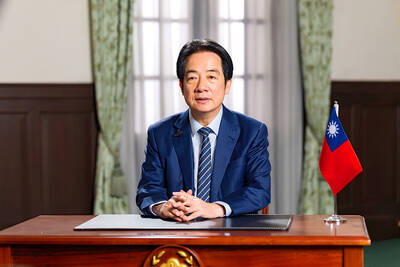
The Democratic Progressive Party (DPP) controlled Executive Yuan (often called the Cabinet) finally fired back at the opposition-controlled Legislative Yuan in their ongoing struggle for control. The opposition Chinese Nationalist Party (KMT) and Taiwan People’s Party (TPP) acted surprised and outraged, but they should have seen it coming. Taiwan is now in a full-blown constitutional crisis. There are still peaceful ways out of this conflict, but with the KMT and TPP leadership in the hands of hardliners and the DPP having lost all patience, there is an alarming chance things could spiral out of control, threatening Taiwan’s democracy. This is no